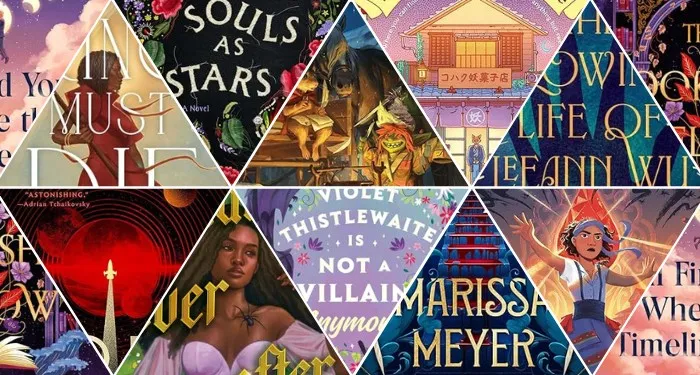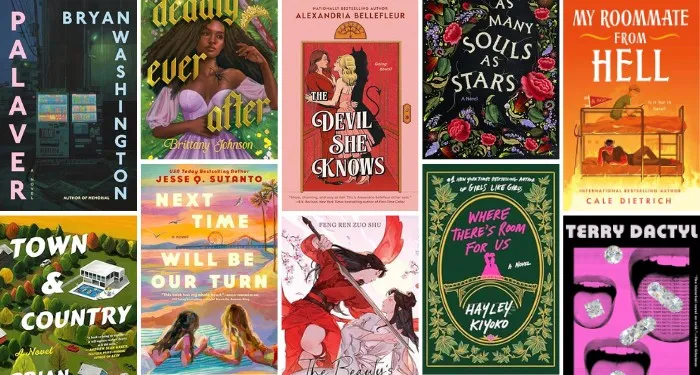Thomas Pynchon’s 1990 novel Vineland features a distinctive running joke in which titles of Hollywood films are marked with the years of their release: “They were talking about Return of the Jedi (1983), parts of which had been filmed in the area.” This holds even when a title is mentioned in dialogue, by a character who can hardly be expected to have cared to cite the year of a given film’s release, or even to know it:
“Let me guess—2001: A Space Odyssey [1968].”
“Try 20,000 Years in Sing Sing [1933].”
The suggestion may be that Pynchon’s sentences occupy both a novel and a film studies text. His books are drenched in cinematic nods both high and low; dude loves going to the movies. He may live there. But the whiff of scholarly apparatus reminds us of another trait we may safely impute to our elusive hero: Pynchon haunts the archives. He knows the dates of things. This specificity entrenches his conspiratorial Looney Tunes in hidden histories and secret causalities.
Pynchon also apparently wastes his time between books watching what he calls “the Tube,” revealed in an avalanche of references to The Mod Squad, Hill Street Blues, and Gilligan’s Island; David Foster Wallace complained in a letter that Vineland read as if Pynchon had “spent 20 years smoking pot and watching TV.” Is it revealing that the TV shows mentioned in that novel don’t get their years appended to them? A kind of qualitative fire wall between cinema and mere television is a typical mid-twentieth-century bias. Films are regarded as glamorous, possibly an art form; television, an invader squatting in our homes to replace the book, the hearth, the babysitter, and the family piano, is squalid and disposable. To grow addicted to it is to become a solitary tippler, a day drinker. Nowhere is this bias more evident than in the medium of film itself. All That Heaven Allows (1955), A Face in the Crowd (1957), Network (1976), The Truman Show (1998), and Requiem for a Dream (2000) variously offer the senior medium’s warnings about the evils of the junior.
For my generation—Paul Thomas Anderson’s, approximately—the distinction is less clear. By the time I was a latchkey kid flipping channels, I wallowed not only in I Love Lucy reruns but in old films recycled as filler for local broadcast. My first experience of the Godfather cycle was when in 1977 Francis Ford Coppola, to suit the late-1970s craze for prestige miniseries, recut the first two films into Mario Puzo’s The Godfather: A Novel for Television, an event for which we crowded onto my friend Joel’s parents’ bed for four successive nights. And, of course, there were the yearly ritual viewings of West Side Story and The Wizard of Oz. I saw much of Hitchcock first on WNET, alongside MacNeil/Lehrer, I, Claudius, and Monty Python. Meanwhile, movie stars had shipwrecked onto TV—Groucho, Barbara Stanwyck, Fred MacMurray, Tony Randall.
Anderson had an unusual vantage on the taming of the big screen to the small: his father, the disc jockey and announcer Ernie Anderson, served from 1963 to 1966 as “Ghoulardi,” the horror film host on a local Cleveland television station. His father’s run as host was finished before Anderson could have seen it live, but the Ghoulardi legend—which inspired underground Ohio bands like Devo and Pere Ubu—was such that he attached Ghoulardi’s name to his production company, beginning with his second film, Boogie Nights (1997). That movie, which made Anderson famous, reworks the theme of one medium’s distaste for the next in its tale of a proud pornographic film industry on the verge of destruction by a flood of cheaply produced videos. The story recapitulates, in a satirical key, film culture’s tendency to self-mourn. Think of Gloria Swanson in Sunset Boulevard, bemoaning the loss of silent film: “We didn’t need dialogue, we had faces!” Subsequent travesties include the partition of movie palaces into multiplexes; interventions like colorization and pan-and-scan and—needless to say—the rollout of television and the ever-yet-smaller screens that have followed.
Anderson’s curiosity about new media halts at television; he has skirted any portrayal of characters’ use of the Internet, most often by setting his films decisively in a precomputer past. A devotion to celluloid has culminated in Anderson’s revival of the nearly lost VistaVision process for his newest film, One Battle After Another. Like Cinerama, CinemaScope, 3D, and Smell-O-Vision, VistaVision was introduced to lure postwar filmgoers back into theaters for unique experiences unrivaled by the television screen. Many notable English-language directors of Anderson’s generation—Kelly Reichardt, Lynne Ramsay, Andrew Bujalski, Sofia Coppola, Jonathan Glazer—have dallied with digital or video cameras, and with them, smaller production footprints. Even among those who expressly connect their work to the classical studio-era style—think of Todd Haynes, with his reverence for Douglas Sirk—there may be variations from the model: newer cameras, occasional television series, or features for streaming. (The same has been true of some of the older directors, like Robert Altman, Francis Ford Coppola, and Michael Mann.) Anderson, then, dwells in a purist aerie, with only the more fetishistic Wes Anderson and Quentin Tarantino (the latter has called digital projection systems the “death of cinema” and “television in public”) for cover.
Without commanding a popular audience the size of Tarantino’s or, like Wes Anderson, inspiring museum exhibitions and coffee table books (and endless parodies) because of the peculiar inventions of his style, P.T. Anderson has for many been accorded a loose status as “arguably the preeminent Hollywood filmmaker of his generation.”1 For my part, already amazed by Boogie Nights (1997) and Magnolia (1999), I began holding my breath at word of each new Anderson release after the experience of There Will Be Blood (2007). I liked the next, The Master (2012), even better. Anderson has at times resuscitated my faith that genuinely big films, new ones, might still fulfill their terms with subtlety, wit, and verve.
Vineland is set firmly in 1984, at the doorstep of Reagan’s second term. Much of the book consists of flashbacks to his characters’ participation in a late-1960s and early-1970s revolutionary left; within these come further flashbacks, to equally grounded accounts of earlier twentieth-century politics: Wobblies, McCarthyite purges, the blacklist. In One Battle After Another, Anderson has delivered a free adaptation of Pynchon’s wistful book, one that is at once “updated” for our times and unmoored from any literal history. The film appears to take place, somehow, in two different renditions of a loose “now,” renditions bridged by a sixteen-year gap (during which an infant grows to be a teenager). Critics have already tried to secure a timeline based on the makes of cars and the legends on T-shirts, but the film floats loose of chronology. Perhaps its later scenes are set in some version of the future? At the same time, the result has been widely acclaimed for its thrilling currency, its outrageous, supersize relevance. Has the director here overthrown his typical preference—unmistakable and beguiling—for the past? Or is something stranger going on?
Perhaps the times can bring themselves to meet a given work of art. Anderson has remarked that he’d been fooling with an adaptation of Pynchon’s book for twenty years, but it seems unlikely that his early conception of the project included extensive depictions of militarized mass deportations (not a subject in the novel). One Battle After Another, prepared and shot before Trump’s reelection, is something more than prescient; it seems to have won an existential gamble, on a high and devastating level, in staging scenes of a US invasion of its own cities, scenes in which officials with guns occupy high schools and hospitals, all under an official pretext originating in a corrupt and insane commander’s personal vendetta. And at a time when the onset of contemporary fascism has reached such brazenness that it openly shops for a Reichstag fire to call its own, we watch a scene of troops confronting street protesters and creating a false flag Molotov cocktail attack on their own barricades in order to justify fighting “fire with fire.”
The concurrences galvanize our attention to an uncanny degree. It is as though the director had flowed his vision out of the tiny nightmare reels and risible memes we lately find on our phones and directly into the massive and collective sensorium of a first-run movie theater. Anderson’s alternative present has been embodied by famous actors working with a commitment and invention that match the movie’s psychedelically rich visual texture, accompanied by a soundtrack by Radiohead’s Jonny Greenwood (Anderson’s regular collaborator since There Will Be Blood), a soundtrack set to nervous-system overdrive, offering a wave of sonic panic you ride inside with delight.
A further piece of serendipity was even more specific, and perhaps more awkward: Assata Shakur, a permanent fugitive from US justice, died twenty-four hours before the film was released. The life of Shakur, a member of the Black Liberation Army and the godmother of the rapper Tupac Shakur, echoes that of the protagonist of the film’s first forty-minute section, Perfidia Beverly Hills, played by Teyana Taylor. Though her costars Leonardo DiCaprio and Sean Penn may for many viewers be more familiar, Taylor is the eye of the storm, seizing the attention of the male leads while they are still unknown to each other and initiating the crises that will drive the story past the sixteen-year gap to its later calamities and rescues.
On first viewing, this long, hectic prelude is both exhilarating and uncomfortable—a challenge. Taylor’s character is provocatively hostile and absurdly sexualized, with an impulsiveness that seemingly overrides her political commitments. She makes a boyfriend out of DiCaprio’s Ghetto Pat, hapless bombing expert at the periphery of her revolutionary cadre, and juggles the malicious attentions of the white supremacist super-soldier Steven J. Lockjaw—Penn—by kindling in him a bewildering new erotic self. Of these two men, one is responsible for her pregnancy. The world requires revolution. At the crossroads of these pressures, and likely terrified at the possibility that Lockjaw is the father, Perfidia will run, abandoning the infant daughter to Pat’s care. The dialogue is fractured, breathless, and sloganeering, suggesting a film with too much on its mind to slow down and help the viewer make sense of it.
Even if one has never heard of Assata Shakur, the casting may set off alarms. In transplanting Black identity, and a Black radical family, into Pynchon’s plot, which centers on Frenesi Gates—a white, blue-eyed activist too aroused by men in uniform not to betray her principles and the members of her cell—Anderson has done something more than evoke US racial legacies. He has also forced us to recall that the Black Panthers viewed the Weather Underground, the real-life group whose actions and fates most resemble those of Anderson’s fictional French 75, as indulgent, undisciplined, and privileged—childish bomb throwers incapable of real organizing. There’s no mistaking the source for the French 75’s rhetoric and methodology; Anderson has titled his film after a Weather Underground statement published in New Left Notes in 1969, while a letter from Perfidia to her daughter, read aloud in the film’s closing moments, reproduces several lines from a former member’s “Letter from Underground” (as quoted in The Weather Underground, a 2002 documentary directed by Sam Green and Bill Siegel2).
I wondered whether Anderson had also been watching Robert Kramer’s Ice (1970), an anomalous no-budget masterwork featuring unknown and mostly untrained actors as revolutionaries in a near-future New York City. Kramer’s velocity, his roving interest and willingness to satirize his dissidents’ sexual foibles, as well as his vagueness about temporal setting, suggest a possible source. The reverberations, dislocations, and provocations of One Battle After Another’s opening generate ferocious energy; we wait to know whether they will generate meaning as well. For me, after two viewings, the first forty minutes seemed, however unclarified, however nerve-shredding, by far the best. They offered promises the film wasn’t ready to keep and made trouble it couldn’t sustain.
On the verge of the film’s leap across decades, Perfidia slips all the traps laid for her, making a desultory escape from the film. At this, for all the wild pleasures of the two hours that follow, the film about revolutionaries escapes with her. What we’re given instead is the most seductively complacent needle drop of Anderson’s career: Steely Dan’s “Dirty Work.” It announces the new film, the predominant film: a mash-up of a Gen X loser comedy and a kinetic and gritty chase movie, one suggesting that Anderson has folded Alex Cox’s Repo Man (1984) and Sam Peckinpah’s Bring Me the Head of Alfredo Garcia (1974) into his kit of influences. Penn’s villain is a Brechtian marvel, a Frankenstein of lust, rage, masculinist conformity, racism, and deep terror, at the intersection of Dr. Strangelove and Pete Hegseth. Maybe even better is a new character introduced only after the break: Benicio del Toro as Sensei Sergio, a karate instructor who casually multitasks an underground railroad for persecuted migrants (or, as he calls it, his “little Latino Harriet Tubman situation”). Del Toro’s best scenes ignite the curiosity and wit of Anderson’s camera and cutting; they seem to self-invent like bebop, and almost rescue the movie. The amplitude, the riot and hoot, the tonal and vehicular swerves and collisions of One Battle After Another make for cineplex joy. It is only once out of the theater that we may sense that this frantic diversion has left its central material essentially unconfronted.
The problem doesn’t lie at the film’s edges, which sizzle with detail, but is instead a matter of what has been subtracted from its very center and what has been substituted. Nor does the fault lie with DiCaprio’s performance as the former Ghetto Pat, who has assumed a new underground identity as the long-suffering dedicated solo dad Bob Ferguson. A great physical comedian, DiCaprio shades Bob with incomprehension, remorse, and true charm, making the most of what he’s been given. Yet we’ve seen this stoner’s bathrobe before; it once belonged to the Dude in The Big Lebowski. That Bob is a cipher to himself is a pretty good joke, but not good enough to mask that the film has now met him in the same place. Anderson’s old method, of dropping a Candide-like innocent into a Machiavellian world—consider Mark Wahlberg in Boogie Nights, Joaquin Phoenix in The Master and Inherent Vice (2014), or nearly any role he’s given to John C. Reilly—has betrayed him. We miss Teyana Taylor, and Perfidia Beverly Hills, too dearly. We miss her angers, her betrayals, her risks, which include the risk that the film in which she appears won’t be capable of explaining her to us any better than Pynchon managed to explain Frenesi Gates. (I’m pretty certain he didn’t.) The only thing we can’t abide is for it to quit trying. Quit trying is what it does.
This lapse, it seems to me, isn’t only thematic but formal—and material. Certain stories need to subtract characters in order to proceed: Charlotte Haze must die for Lolita to be orphaned into Humbert’s care; Dickie Greenleaf must be murdered so that Tom Ripley can impersonate him. Yet films call forth our somatic responses to actors; it has always seemed to me that Shelley Winters’s and Jude Law’s performances are too vital and funny for Stanley Kubrick’s and Anthony Minghella’s films not to be damaged by their exits from the scene. Conversely—perhaps unfairly—a tale made of sentences can allow a missing character, say a disloyal runaway terrorist mom, to go on existing even after she vanishes. If everyone goes on speaking and thinking about a character like Frenesi Gates, as everyone does in Vineland, then she still exists for us nearly on a par with those doing the thinking and speaking, since they are only made of sentences themselves.
The ending of One Battle After Another, which encourages us to sentimentalize this damaged family romance, is the worst of Anderson’s career—particularly mysterious given that he’s previously demonstrated a special gift for the Pynchonian nonending, one that solves nothing and throws an audience back into its own wondering. Instead Bob, that goof, is on the couch, learning to take a selfie. The future has been handed off, approximately, to his daughter, God help her. She’s off to participate in a… something…in Oakland. Their hearts have been healed by the transmission of a secret letter from Perfidia, the nearest the film comes to contending with its missing, mythic, monstrous center—too little, too late, too lame. The gist of the letter is that the bad mother concedes her role to the good father. Because the letter’s lines are partly borrowed from a real revolutionary document, the filmmaker has failed to notice that he’s rehashed the finale of Kramer vs. Kramer.
Ultimately, Bob’s decades of stoner fugue set him outside of time in such a way that this film, which may seem to flirt hard with the present, at last ghosts it. Sacred tokens of revolutionary desire, like Gil Scott-Heron’s “The Revolution Will Not Be Televised,” anchor Bob and his movie—for it turns out to be his movie—in a crate-digging sensibility, and seem to decorate a political nullity. As squalid and depressing as most cinematic depictions of the Internet tend to be, the online realm is painfully real in its influence on our present circumstance. How can it be that Pynchon’s thirty-five-year-old novel about fractured revolutionary solidarity seems to have more to say about the problem than Anderson’s update? Screen addiction in Vineland is a symptom of collective surrender to fascist repression: “Give us too much to process, fill up every minute, keep us distracted, it’s what the Tube is for.” Anderson’s diffidence about uncinematic screens may help explain why this film so flatters the vicarious wish to be free of it—our present circumstance, I mean.
I’m not immune. I felt a delighted rush at glimpsing a few frames of Gillo Pontecorvo’s The Battle of Algiers (1966), which Bob screens for himself. Yet I fear the real Bobs—I know a few—have moved on to other diversions. Some of them have been dabbling, in their wounded innocence, in VHS tapes of the September 11 conspiracy thriller Loose Change (2005). Others are heavily online, lurking in forums where they wait for another drop from QAnon. The question raised by Scott-Heron’s anthem is this: If not televised, where will the revolution unfold? It is the question that ran away with Perfidia Beverly Hills.
The second time I went to see the movie, I took my fifteen-year-old son. Afterward we shared his excitement, and my reservations. “Politically it’s a little incoherent, don’t you think?” I asked. He shrugged his agreement but then added, “At least it takes some time to show the concentration camps.”
I liked that he used that term—the right term, it seems to me, one that doesn’t appear in the film. And perhaps this is enough. On one point, at least, Anderson and I are in perfect accord: the kids are all right.
But I do think that Bob should get off the couch.



















 English (US) ·
English (US) ·